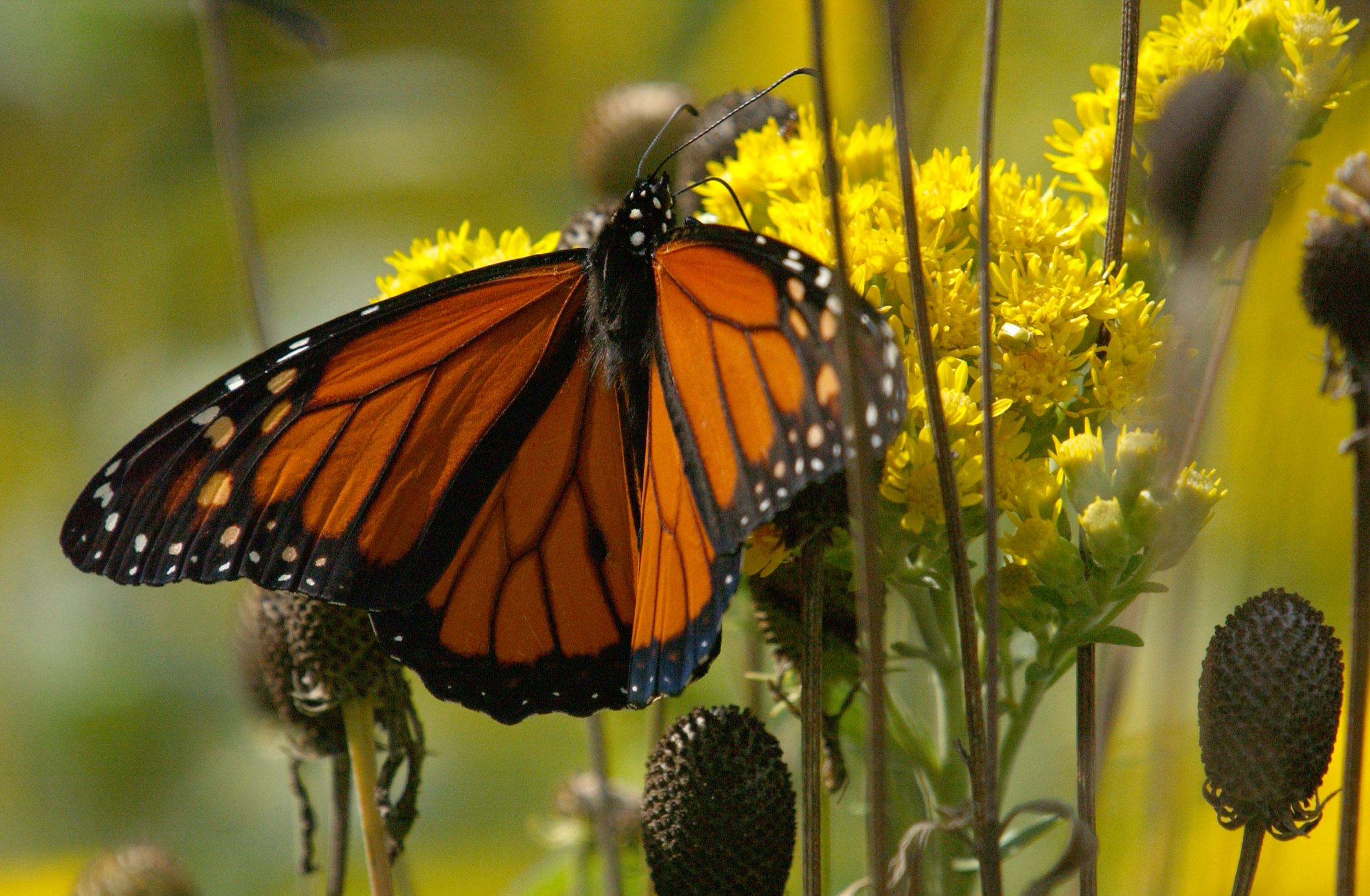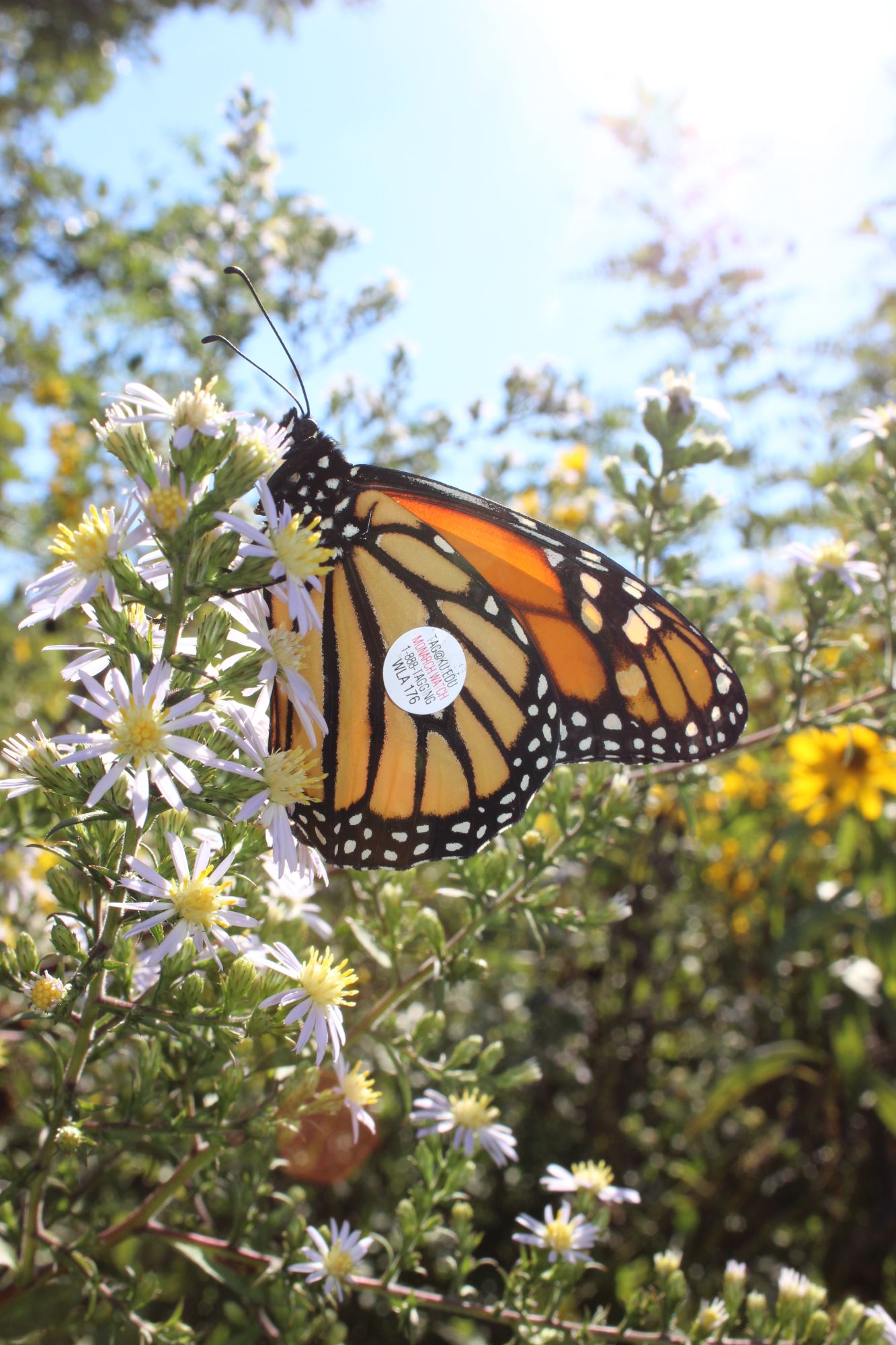Join the Monarch Migration
By Greta Solbrig on September 15, 2023 in Blog
As fall approaches, monarchs are gearing up for their long flight south to avoid the cold winter temperatures. Beginning in September, our black and orange friends make the trip to the warm habitats of central Mexico.
Monarch migration season is a great time to get outdoors with your family and explore the insect world! Knowing more about monarchs can enhance a child’s natural curiosity for their environment. Learn more about monarchs below before you head outdoors to observe these charismatic creatures.
The Basics
Monarch butterflies are a species of insect well known for their beauty and role in pollination. These are the only butterflies to make an annual two-way migration like birds do, which is pretty impressive considering they weigh less than a paperclip.
 Monarchs are also unique in their ability to deter predators with their coloring. The sharply contrasting orange and black wings signal to predators that they are toxic to consume. These toxins come from the caterpillar’s diet, which feed exclusively on milkweeds.
Monarchs are also unique in their ability to deter predators with their coloring. The sharply contrasting orange and black wings signal to predators that they are toxic to consume. These toxins come from the caterpillar’s diet, which feed exclusively on milkweeds.
Monarch Characteristics
 If you to get a closer look, it is important that you do so carefully. Monarchs rely on their wings for survival, and they are fragile structures. If you feel a monarch wing it may leave a fuzzy residue on your fingers. These are some of the many scales that cover a butterfly wing! They need these scales to fly properly. If you can get close enough, check out the long, needle-like structure between the eyes of the monarch, called the proboscis. It may resemble a tongue, but it is more like a long tube used to extract nectar from a flower. The majority of a butterfly’s “taste buds” are actually on its feet!
If you to get a closer look, it is important that you do so carefully. Monarchs rely on their wings for survival, and they are fragile structures. If you feel a monarch wing it may leave a fuzzy residue on your fingers. These are some of the many scales that cover a butterfly wing! They need these scales to fly properly. If you can get close enough, check out the long, needle-like structure between the eyes of the monarch, called the proboscis. It may resemble a tongue, but it is more like a long tube used to extract nectar from a flower. The majority of a butterfly’s “taste buds” are actually on its feet!
Challenges the Monarchs Will Face
For some butterflies, the journey can be as long as 3,000 miles! How can such delicate creatures manage to find their way so far from their breeding grounds? They use environmental cues, one of which is the sun’s position in the sky, often referred to as “sun compass.”
On this trying trip toward the equator, monarchs will face both environmental and human-caused stressors. Strong winds and pesticide use both interfere with the migration, which relies on multiple generations of butterflies to complete. The insects also cannot fly at night, as they risk a drop in body temperature and lack of direction from the sun.
Habitat threats also account for population decline. Availability of milkweed and other nectaring plants in their breeding range is critical. Oyamel Fir Forests provide the perfect microhabitat for these creatures, which rely on abundant nectar and humidity for survival. Logging within these forests destroys monarch habitat, while climate threats also alter the environmental cues the monarchs rely upon for flight direction.
The eastern Monarch population has declined again this year, with 22% fewer monarch documented overwintering in the oyamel fir forests.
How to Participate in the Journey
Community science projects are a great way to get involved with the monarch migration. Monarchwatch.org urges people to participate in data collection through their tagging program that tracks monarchs on their journey south.
 Throughout September in Iowa, many organizations offer public monarch tagging events. To find one near you, try looking on MyCountyParks.com, a website for Iowa’s County Conservation boards to share information about their parks and events. You can also check your local city parks and recreation department or other nature based community organizations.
Throughout September in Iowa, many organizations offer public monarch tagging events. To find one near you, try looking on MyCountyParks.com, a website for Iowa’s County Conservation boards to share information about their parks and events. You can also check your local city parks and recreation department or other nature based community organizations.
You can also think closer to home, even in your own yard. Having a stable food source all throughout their journey will ensure that the monarchs reach their destination in Mexico. Planting pollinator gardens can help give them the needed fuel. Monarch favorites include all varieties of milkweed, prairie blazingstar, coneflower and goldenrod, but they are not specialized and benefit from a wide range of native plants. Be careful to select plants that have not been treated with pesticides, particular ones labeled as neonicotinoids. Fall and winter are great times to plan your garden, or if you find native prairie seeds, you can plant those.